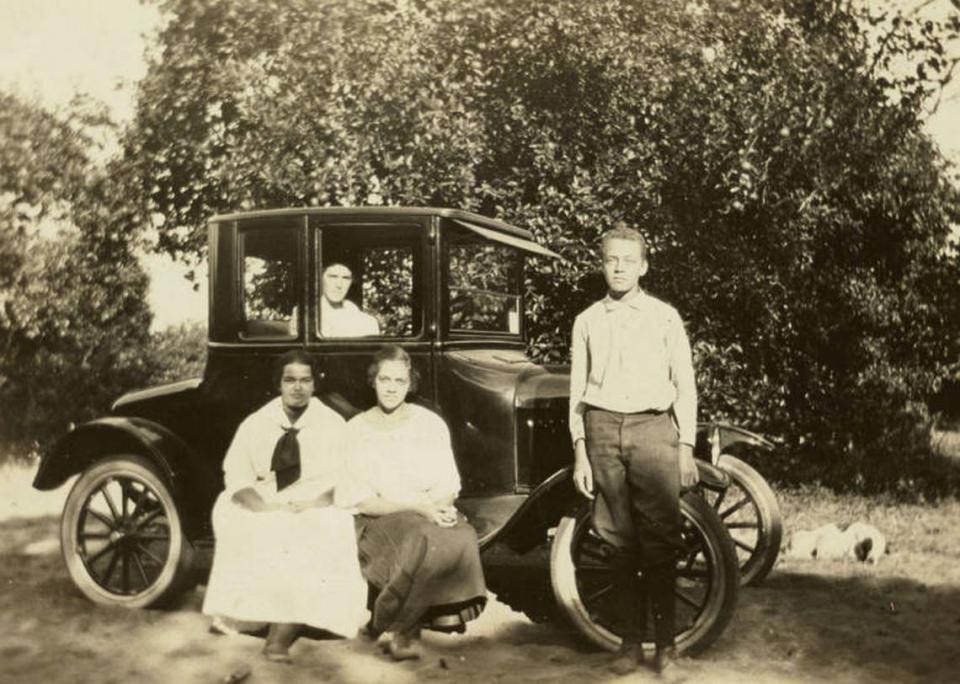Decades before Juneteenth became a holiday, Fort Worth had rich history of celebrations
Our Uniquely Fort Worth stories celebrate what we love most about Cowtown, its history & culture. Story suggestion? Editors@star-telegram.com.
One of the earliest Fort Worth Juneteenth celebrations took place in 1882.
The Fort Worth Daily Democrat announced that the city’s Black residents gathered at “Widmer’s Grove where music and dancing, and speech-making consumed the day, and extended into the night.”
Over the years, Juneteenth celebrations spread across the city to Lincoln Park, Botanic Garden, Dixie Park, Douglass Park, Greenway Park, Lake Como, McGar Park, East Riverside Park and Forest Park, but not the public swimming pool. Festival organizers offered white people reserved seating at several locations.
The Fort Worth Morning Register reported two Emancipation Day celebrations in 1897. On Jan. 1, over 300 prominent Black citizens gathered in the lavishly decorated Odd Fellows lodge with a sumptuous menu, orchestral music and dancing into the late hours. Professor I.M. Terrell gave a speech highlighting Black progress.
The traditional festival on June 19 of that year started with a parade downtown led by the Silver Cornet Band to Douglass Park. The Goddess of Liberty rode in a carriage, and young women representing each state waved from a decorated wagon. At noon in the park, revelers listened to a recital of the Emancipation Proclamation, a speech by the Goddess of Liberty, and “America” sung by children. After a free dinner at 3 p.m., the games started: foot and bicycle races, a “fat man’s race,” baseball, greasy pig catching and target shooting.
Richard Selcer, author of “A History of Fort Worth in Black and White,” wrote that in 1916, a Black janitor in city hall named Henry Davis asked to fly the U.S. flag on Juneteenth on the city’s tower. Until then, the city hoisted the Stars and Stripes only on national holidays. They told him to fly it every day thereafter.

Fort Worth Police Chief Henry Lee reported the Juneteenth celebration of 1923 was more peaceful than in the past. They tallied 12 arrests, none for serious charges. He told the Fort Worth Press they had ambulances on standby for possible shootings and knife fights.
On June 19, 1934, Dr. T.S. Boone, pastor of Mount Gilead Baptist Church, wrote in the Fort Worth Press about Negro achievements in the U.S.:
Pietro Alonzo piloted the Niña ship for Columbus.
The only man living from Robert Peary’s expedition to the North Pole was Matthew A. Henson.
Benjamin Banneker, astronomer and mathematician, invented the first clock made in the U.S.
Henry Johnson and Neeham Roberts were the first Americans to receive the French Croix de Guerre in World War I.
The largest Protestant organization was the National Baptist Convention of America.
Black contributions to American slang included “strut your stuff” and “smear it on thick.”
Mainstream culture adopted Black dances like the Charleston, the black bottom, booger roger and sock drag.
Black musical genius created the blues and jazz.
In 1935, the Fort Worth Press reported that 10,000 Black people celebrated Emancipation Day at Forest Park, including the zoo. Animal keeper Hamilton Hittson eagerly sought a volunteer to wrestle Patsy the chimp. A brave 10-year-old Elbert Pearl entered the cage and grappled with the animal, who quickly threw him twice. For his reward and remembrance, he received two postcards displaying Patsy.
In 1936, Juneteenth coincided with the “Century of Negro Centennial,” the Fort Worth Black celebration of the Texas centennial. W.M. “Gooseneck Bill” McDonald gave the Emancipation Day address at Lake Como festival grounds. Activities included a 35-man race from Arlington Downs to Lake Como, 200 spiritual singers, Yerger “the Prophet of India” resurrecting a man he had hypnotized and buried, and the 13-piece Beverly Garden Orchestra from New Orleans performing at the Centurian Club open-air dance pavilion.
At 8 p.m., the music stopped to hear the broadcast of the Joe Louis-Max Schmeling heavyweight fight. Schmeling, who was German, knocked out the “Brown Bomber” in the 12th round. Prior to a 1938 rematch, Nazis touted Schmeling’s victory as proof of Aryan superiority. Louis stopped Schmeling in two minutes and four seconds of the first round.
In 1939, Juneteenth celebrants witnessed a poignant program that reenacted slavery days by 50 ex-slaves living in Fort Worth. They ranged in ages from 74 to 105, with Lucy Crayton of 1105 E. Pulaski St. as the eldest. The performance, “Stony the Road We Trod,” took place at the Black Masonic Mosque on East 3rd Street.
In the first scene, a slave sang “Look Down that Lonesome Road” as he was inspected by a white buyer. In a second scene, slaves in a cotton field sang “Nobody Knows the Trouble I’ve Seen.” The third scene depicted a runaway slave in tattered clothes who sang “I Couldn’t Hear Nobody Pray.” Proceeds from the pageant were given to the former slaves.

Some local restaurants closed on Juneteenth because their workers attended celebrations. However, the United Packinghouse Workers of America staged a 1,000-worker walkout of Armour Company in 1945 when management at the Stockyards meatpacking plant suspended five Black workers and discharged two for missing work to honor Juneteenth. After two days, slaughterhouse bosses withdrew the suspensions and reinstated one of the fired workers.
In Opal Lee’s long walk to promote Juneteenth as a national holiday, she followed a path well worn by thousands memorializing their freedom and rallying for a better America.
![Attendees of Juneteenth parade festivities in Fort Worth; 1983-06-18 [FWST photographer Ron T. Ennis]](https://s.yimg.com/ny/api/res/1.2/CbQlVbg9dHDXpU821QQZFw--/YXBwaWQ9aGlnaGxhbmRlcjt3PTk2MDtoPTE0Mjc-/https://media.zenfs.com/en/fort_worth_star_telegram_mcclatchy_952/58a88149c65fb7427dc40572fcd3c863)
Author Richard J. Gonzales writes and speaks about Fort Worth, national and international Latino history.

